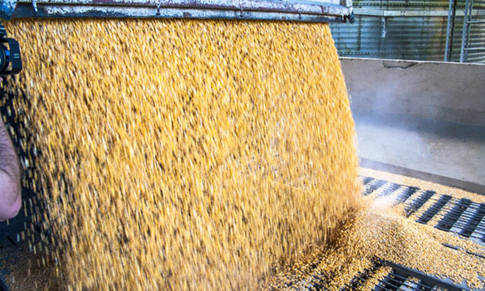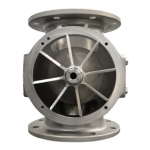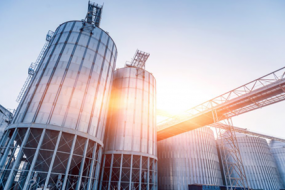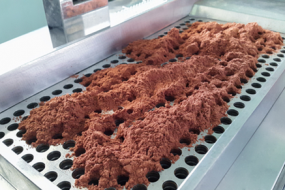Dust Explosions: 7 of the Most Vulnerable Powder Processors and Manufacturers
When it comes to protecting plant and employee safety, many powder processors are focused on mitigating the buildup of combustible dusts as they can lead to costly and even deadly dust explosions.
In fact, 14 people were killed and 38 others were injured in a single, tragic dust explosion at Imperial Sugar Company in Port Wentworth, Georgia in 2008. Furthermore, the Center for Public Integrity analyzed data from the Occupational Safety and Health Administration (OSHA) back in 2012 and reported that 130 workers have lost their lives and 800 more have been injured in hundreds of combustible dust accidents since 1980.
How are these deadly accidents caused? According to OSHA, any solid that can catch fire is explosive when turned into dust. Therefore, combustible dust is a deadly possibility across several industries. And all that’s needed to create explosive dust conditions are five things: combustible dust, an ignition source, oxygen, confinement of the dust cloud, and dispersion of dust particles.
As you can see, combustible dust and dust explosions are often top of mind for many powder processors. After all, they’re routinely processing fine, dusty powders. But of course, this threat isn’t limited to powder processors. Other manufacturers are vulnerable, too. In this article, we highlight the seven processing, industrial and manufacturing facility types that are the most vulnerable to dust explosions.
1. Grain Elevators
Over the past 45 years, there have been 500 explosions in United States grain elevators alone, taking the lives of over 180 workers and injuring another 675. When not properly maintained, grain elevators produce a deadly accumulation of combustible dust.
When grain is transferred in the elevator, grain is released in high volumes, creating suspended grain dust particles. With nowhere for the dust to go, the dust cloud becomes confined inside the grain elevator legs and leg boots. If this goes on long enough, the dust will accumulate to hazardous levels. From here, all that’s needed to create a dust explosion is for the dust to come into contact with an ignition source like an overheated bearing.
2. Food Production
Research by the OSHA National Emphasis Program found food dust is the culprit of 23% of all combustible dust explosion accidents. Combine that with the fact that the food industry has the most dust explosions than any other, and you have undeniable proof that food processing plants are some of the most at risk plants for dust explosions.
Food production is largely at risk because of the many ingredients involved in the process. Nearly every ingredient used has the potential to become a combustible dust, adding a lot of fuel to the fire. Beyond the obvious possible combustible dusts like flour and sugar, there’s hops, alfalfa, potatoes, tomatoes, and more.
3. Chemical Manufacturing
In 2003, six people were killed and 36 were injured in a large dust explosion at West Pharmaceutical Plant in North Carolina. Responsible for the manufacturing of syringe plungers, IV parts, and rubber compounding, West Pharmaceuticals frequently handled and transferred chemical and plastic powders like polyisoprene and polyethylene.
The handling and transferring of such powders is what places chemical manufacturers and processors at risk. Many different types of materials are used in chemical manufacturing to create unique, formulated products. But too often these materials and the processes used to manipulate them (i.e. rolling, mixing, coating, etc.) create suspended dust particles that accumulate to dangerous heights.
4. Woodworking
Statistically speaking, wood dust is the deadliest of combustible dusts with wood dust being found in 24% of all combustible dust explosions, according to the previously mentioned OSHA research. With the most popular fuel for fire being wood, it’s no wonder that woodworking plants are at high risk for combustible dust explosions.
Woodworking plants including saw mills, furniture manufacturers, and more are all at risk. Hot machinery from saws to hot presses are a must in these plants, adding plenty of heat to a potentially fatal situation. Not to mention the accumulation of saw, wood, and other combustible dusts that may be floating through the air. All that’s needed is the ignition of one dust cloud to release accumulated dust into the air and spark a larger chain of dust explosions.
5. Metal Processing
On Oct. 29, 2003 a dust explosion wracked Hayes Lemmerz manufacturing plant in Indiana, killing one worker and injuring two others. The cause of the deadly dust explosion? Accumulated aluminum dust.
The aluminum dust that caused the fatal explosion at Hayes Lemmerz was used on their production lines to cast aluminum automotive wheels. The dust accumulated to dangerous levels, so when the initial dust explosion occurred, the accumulated dust dispersed through the air and caused a larger, second explosion. Even if you think you don’t have metal powders in your plant, it’s possible you use powdered rubber or plastic on your production lines, which are just as deadly.
6. Recycling Facilities
In 2010, AL Solutions metal recycling facility experienced a dust explosion that killed three employees. Responsible for milling materials to be reused for other manufacturers, recycling plants are loaded with a variety of materials that produce plenty of powder and dust.
Because nearly any solid material, including metal, can explode when in dust form, recycling plants are especially susceptible to tragic dust explosions and fires. Recycling plants need to break down, blend, and pack materials of all kinds, causing an infinite mixture of powders that suspend and accumulate in the air.
7. Coal-fired Power Plants
Coal-fired power plants handle millions of tons of coal a year. And where there is coal, there is coal dust. In fact, many power plants store and save coal dust to be burned for energy and supply power. Areas of the plant that are at extreme risk for combustible dust creation and accumulation are places where coal is transferred, handled, or stored in large volumes.
Considering the highly combustible nature of coal and coal dust, coal-fired power plants are placed at a greater risk for dust explosions. And, as the name of the plant would suggest, the plant is full of fuel (coal) and ignition sources (fire). All it takes is a little wind or vibration to create a hazardous dust cloud that may reach overheated or sparking equipment and erupt into a harmful explosion.
Prevent Dust Explosions at Your Processing Plant
Preventing dust explosions often comes down to two things: cleanliness and control.
To clean your facility, make sure you are constantly removing combustible dust from all surfaces. Do not use compressed air for cleaning, as this only helps disperse combustible dust throughout the plant. Instead, remove the combustible dust from the facility all together with a dust collection system, central vacuum cleaning, and proper ventilation.
For control, it is imperative that your facility is equipped to handle and detect potential explosions. Dust explosion suppression systems are designed to detect a potential explosion before they happen.








